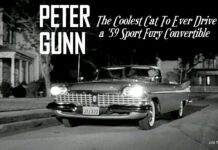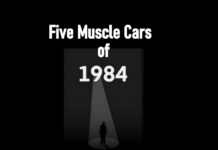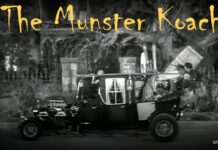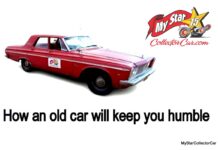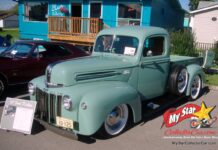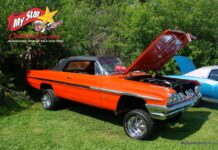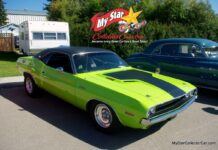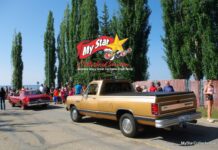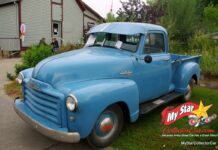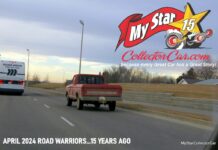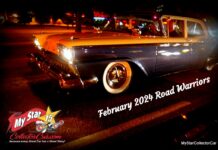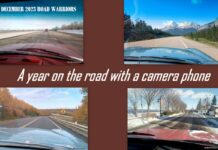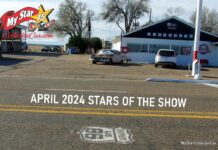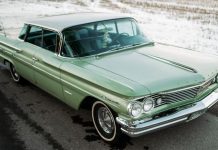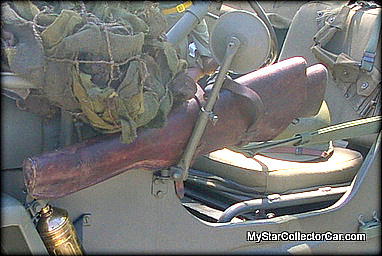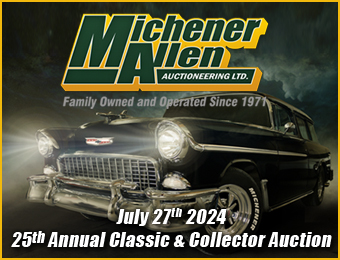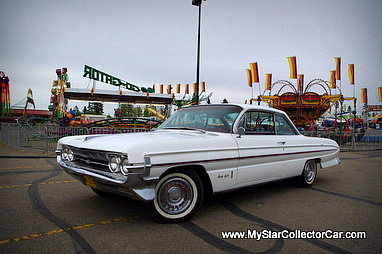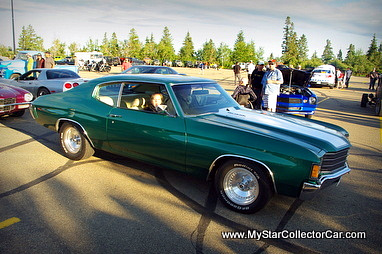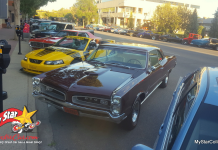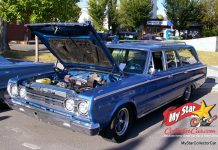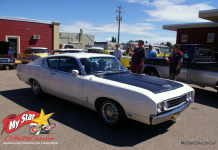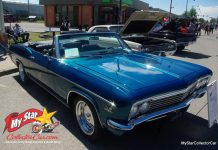Despite the passage of time, D-Day (June 6 1944) is still recognized as a turning point in WW II. 160,000 Allied ground troops hit the beach that day and casualties were high.
This 1942 Willys Jeep survived that day.
The two key experiences in the world of automotive journalism are seeing an old vehicle in person and learning about that vehicle through a question and answer session. This Jeep was magic in both areas.

It’s hard to explain how humbling it was to actually climb around this Jeep because there is such a sense of history contained in this unasssuming vehicle. 99 out of 100 Jeeps are a “tribute” to the real battle machines and typically, they’ll be based on a vehicle that saw no combat duty. The equipment is historically correct but the result is more like a 440 6-pack stuffed under the hood of a 1970 Satellite that came with a 318.
This Jeep is a documented “on the beaches of Normandy” survivor in the truest sense of the word because many of these land vehicles were targeted and sunk long before they hit dry land. Those that did make it to shore became target practice so the odds were against this Jeep the day it was loaded on the transport in England.

Anyone with a smattering of history is profoundly humbled by the knowledge that a lot of guys who saw this Jeep in action didn’t make it back. That’s a very tangible feeling when you’re around a vehicle that was part of a major turning point in history.
The interview process is one of the best experiences in the world of vintage vehicles because it encompasses a learning curve. The owner will give you information about a vehicle that two straight weeks of research on the Internet couldn’t touch and this Jeep was a classic example.

Stew Geekie is the current owner/caretaker of this incredible piece of history. He owes it to a combination of diplomacy and luck as he explained, “ I already had a few Willys and my wife told me I didn’t need another Jeep so I told her Valentine’s Day and her birthday were coming up so now she tells everybody it’s her Jeep”.
Stew is well connected in the vintage Willys world and one of his goals was to own a 2nd World War Jeep.Three years ago a colleague aimed him at one in Washington state with an impressive history.
The last owner was an airline pilot with some idiosyncratic hobbies. He collected cars and weapons in no particular order so when his family had an estate auction in California many of his weapons were turned back at the border because they were illegal. Happily, the Jeep came back to Washington too because the reserve wasn’t met.
That’s where Stew entered the picture because the pilot’s estranged family had no interest in the Jeep and they were three days away from selling his property. The property itself was a three level house with 3600 square feet on each level. It had vehicles on every level including Mustangs and exotic sports cars, but the Jeep was stuffed in the basement beside the indoor rifle range.
Stew admitted, “ I got it on a bit of a fire sale because they had to get rid of it and they only had 3 days. I was in the right place at the right time”. He wasn’t sure whether it was his wife Donna’s birthday or anniversary present but he is sure that “it’s her Jeep”.
Stew is a detail guy so he’s a bipedal encyclopedia about this Jeep’s history. The first thing he pointed out was the broken circle around the star on the hood. He explained, ” That broken circle means it was at Normandy”.

He then went into detail on this Jeep. The rifle scabbard dated back to the Civil War as Stew added, “they used right up to World War II. That’s the same scabbard that the Cavalry would have used in the Civil War, Battle of Little Big Horn and World War One. The only difference is that it’s on a Jeep, not a horse”.

The gas tank is under the driver’s seat and Stew outlined the problems with that design, “The Germans knew where the tank was so they used to shoot at it and light up the Jeep and the driver. Plus the driver had to get out to fuel the Jeep because you had to lift the seat so they used to grumble about that”.

Later on they figured out how to solve the problem as Stew said, “They moved the pioneer tools, the axe and the pick, to the passenger side so then they could fuel it like NASCAR with a filler tube and the driver didn’t have to move. The only time he had to move after that was to grab a map or blanket because they used to stuff them under the seat for padding”.
This Jeep saw night duty because it has the blackout lights. Stew explained how those worked; “ they traveled in convoy and basically all they could see was 2 feet in front so they drove by feel. They had a way of triangulating the point where the lights met so they could judge distance so you say the point met at 50 feet, 25 feet, whatever they adjusted them to judge distance between vehicles”.
General Patton was obsessed with stealth operations so he insisted on the no-reflection rule. That meant several things including draping the burlap camouflage over the roof and on the glass. Stew was extremely proud of the burlap because, as he explained, “that stuff disappeared after the war, it’s pretty hard to find”.
GIs had another way to get by the reflection rules. Stew said,” They traveled with the windshield down so they could get a shot away without glass in the way but the Germans figured that out too, so they strung wire across the road at a neck high level. That’s why that big wire cutter led the way That number 2 was how many tons they could be to cross a temporary bridge after the Germans blew them all up”.

The Jeep had another link to the past in the form of a water bag. Stew explained, “These were used by the Cavalry to feed their horses but by 1944 they were used to haul water for radiators”.

The fire extinguisher is another piece of history. Stew explained, “They used carbon tetrachloride back then, it’s extremely banned now”.

Handles were another feature on these Willys Jeeps and any veteran can tell you how many times they lifted one of these little mules out of a mess.
Stew explained why this Jeep stayed in Europe after the war, ” They gave a lot of their surplus equipment to the Allies after the war so this one ended up in France. In 1961 it was completely rebuilt on a French assembly line. They’d send it in at one end as a worn out Jeep and it would come out the other end as a Jeep. There’s a plaque on the dash that gives all the details “.

Surprisingly, Stew has never driven the Jeep any distance because he’s too tall. He explained, “The average soldier was only 5 foot 7 in World War II so the pedals are too high for me and I have trouble getting behind the wheel easily and the shift lever gets in the way”.

The last stop for the Jeep was the Philippines and that’s where the travels ended for this historical little workhorse. Stew pointed to the registration plaque and added, ” It came home after that”.
That brought this icon of World War II full circle and fortunately this Normandy Jeep is in the hands of a knowledgeable and skilled caretaker.
This D-Day veteran deserved it…
Jerry Sutherland
Follow us on Facebook at-http://www.facebook.com/MyStarCollectorCar
Follow us on Twitter at- https://twitter.com/#!/MyStarCollecto1




